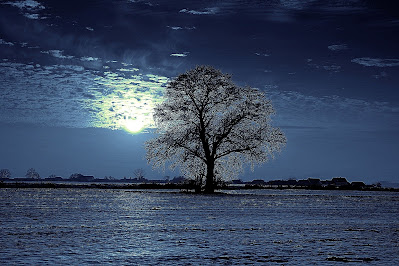Christmas: A Light Shines in the Darkness
The northern winter is dark. There’s nothing particularly special about it. The darkness simply intrudes on the day, and the nights grow long and cold. The winter solstice, the shortest day of the year, halts this advancing night. The days then get gradually longer until the summer solstice, the longest day of the year.
During this annual march from solstice to solstice, the careful observer might notice that the sun’s circuit across the sky also changes. In the northern hemisphere, the sun rises and sets toward the south in the winter and toward the north in the summer. Everywhere on the earth, the sun rises due east and sets due west on the equinoxes, the two days every year when the day and night are equal.
People have known about this annual progression of the sun for millennia. The stones of Stonehenge are famously aligned to the solstices, and the even more ancient mound of Newgrange in Ireland has an entrance aligned with the winter solstice. Today, we know that this annual cycling is a consequence of rotational tilt. The earth’s rotational axis tilts with respect to its orbit of the sun. The northern hemisphere tilts towards the sun in the summer and away from the sun during the winter.
All that winter darkness takes a toll. In the northern hemisphere, when December arrives, people working regular hours might not even see the sun during the week. They drive to work in the twilight of dawn, and they come home after the sun goes down. Darker moods follow the longer nights. In the United States, the gloomy feelings of winter can progress to clinical depression in about one in twenty people. Not surprisingly, one effective treatment of seasonal depression is bright light administered in the morning hours. We don’t know exactly how it works, but the light brings relief.
As it should.
We in the northern hemisphere celebrate Christmas during the darkest nights of the year, a fitting testimony to the prophecy of Isaiah, “The people who walked in darkness have seen a great light” (9:2, ESV). The apostle John went even further: "In the beginning was the Word, and the Word was with God, and the Word was God. ... In him was life, and the life was the light of men" (John 1:1,4).
The coming of Jesus is the coming of light, and the coming of light is the very first miracle of all, in the beginning, when God spoke light into a dark world. Revelation tells us the coming of light will be one of the final miracles of this world, in the New Jerusalem where the Lord himself will come down from heaven and be our forever light.
As we celebrate Christmas during this season of darkness, let us remember the power of the light, not just to cheer our saddened hearts but to save our souls from the darkness of sin.
Have you read my book? You should check that out too!

